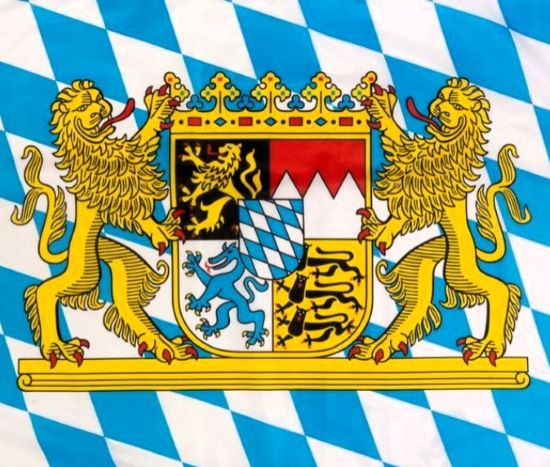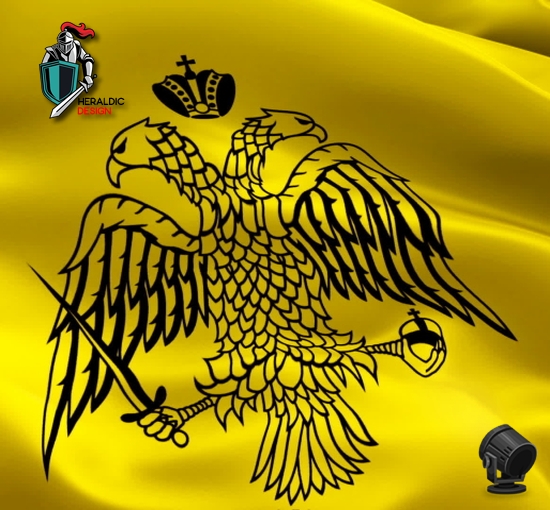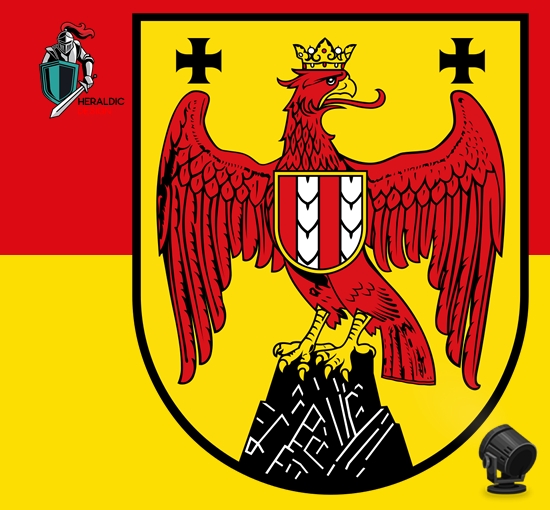Regions of Europe
Bavaria
The Free State of Bavaria (in German: Freistaat Bayern) comprises the entire southeast portion of Germany. It is geographically the largest federal state in the country.
Bavaria is divided in 7 administrative regions: Oberfranken (Upper Franconia), Mittelfranken (Middle Franconia), Unterfranken (Lower Franconia), Bayerisch Schwaben with Allgäu (Bavarian Swabia), Oberpfalz, (Upper Palatinate), Oberbayern (Upper Bavaria), and Niederbayern (Lower Bavaria)
Coat of Arms: The coat of arms of Bavaria has greater and lesser versions. The modern coat of arms was designed by Eduard Ege, following heraldic traditions, in 1946.
First Quarter (The Golden Lion): At the dexter chief, sable, a lion rampant Or, armed and langued gules. This represents the administrative region of Upper Palatinate.
Second Quarter (The Franconian Rake): At the sinister chief, per fess dancetty, gules and argent. This represents the administrative regions of Upper, Middle and Lower Franconia.
Third Quarter (The Blue Panther): At the dexter base, argent, a panther rampant azure, armed Or. This represents the regions of Lower and Upper Bavaria.
Fourth Quarter (The Three Lions): At the sinister base, Or, three lions passant guardant sable, armed gules. This represents Swabia.
The White and Blue Inescutcheon (Herzschild = "Heart Shield"): The escutcheon of white and blue oblique fusils was originally the coat of arms of the counts of Bogen, adopted in 1242 by the House of Wittelsbach.
The white and blue fusils are indisputably the emblem of Bavaria and the heart shield today symbolizes Bavaria as a whole.
The People's Crown: The four coat fields with the heart shield in the centre are crowned with a golden band with precious stones decorated with five ornamental leaves.
This crown appeared in the coat of arms for the first time in 1923 to symbolize the sovereignty of the people.
Sources: Wikipedia | Nations Online


